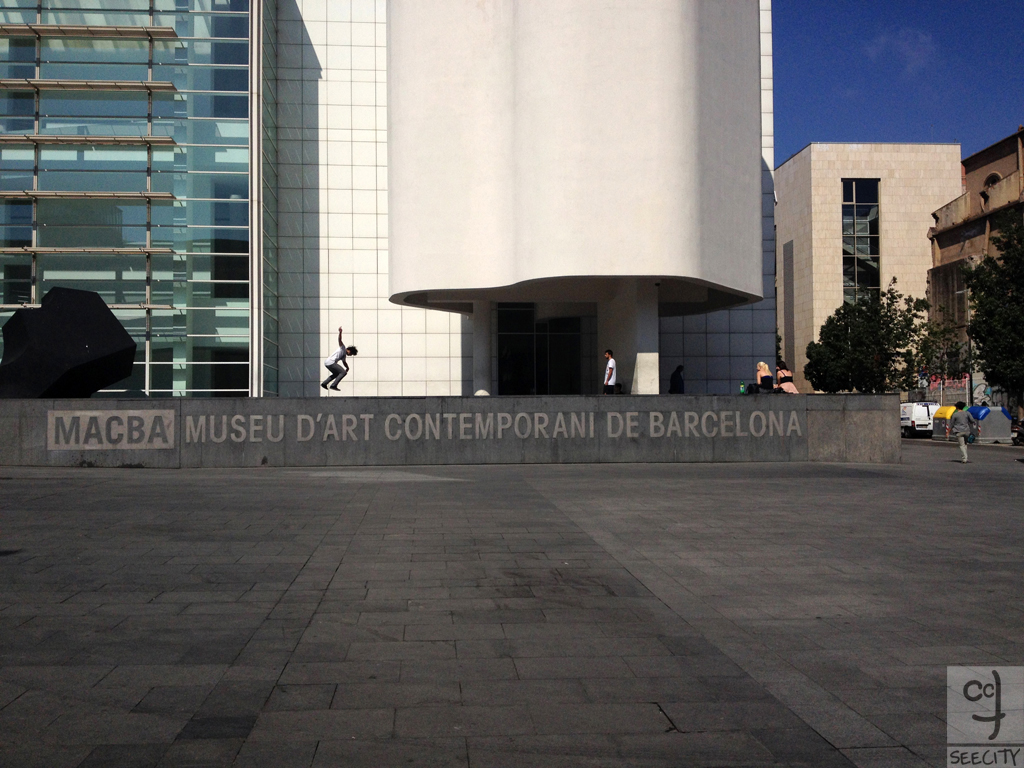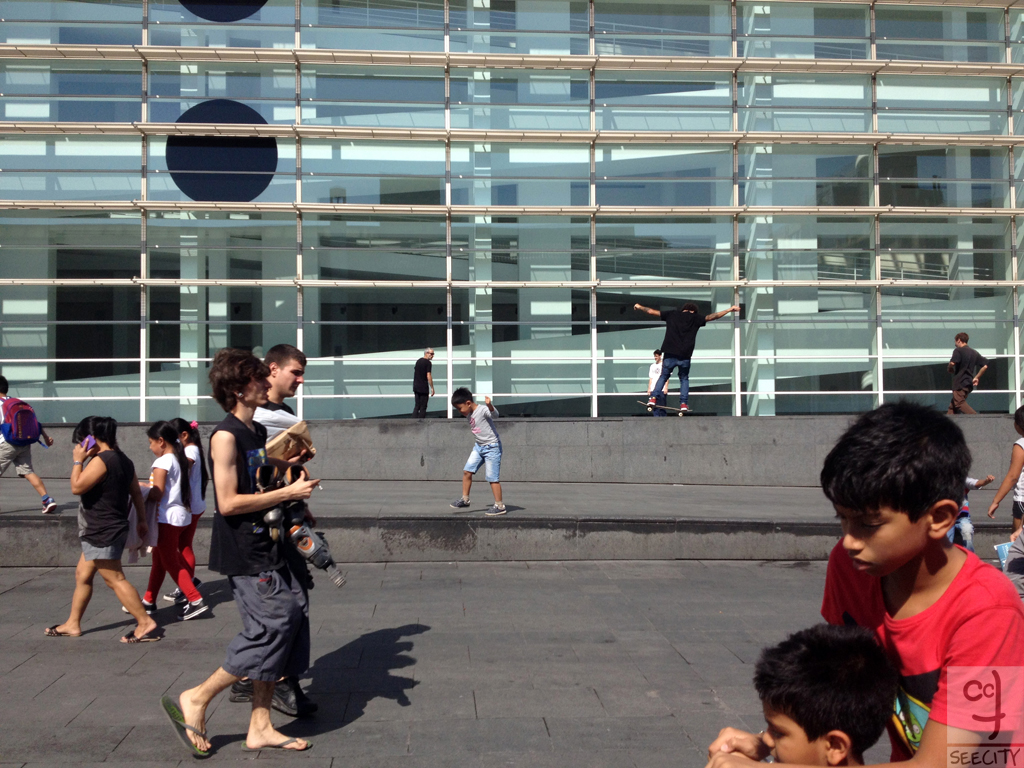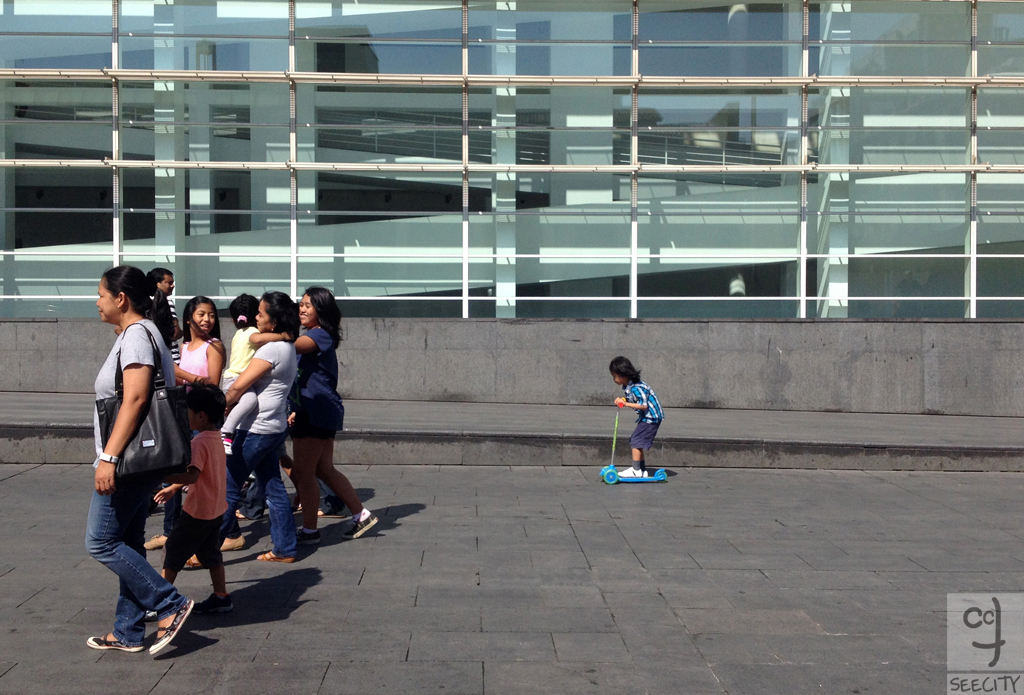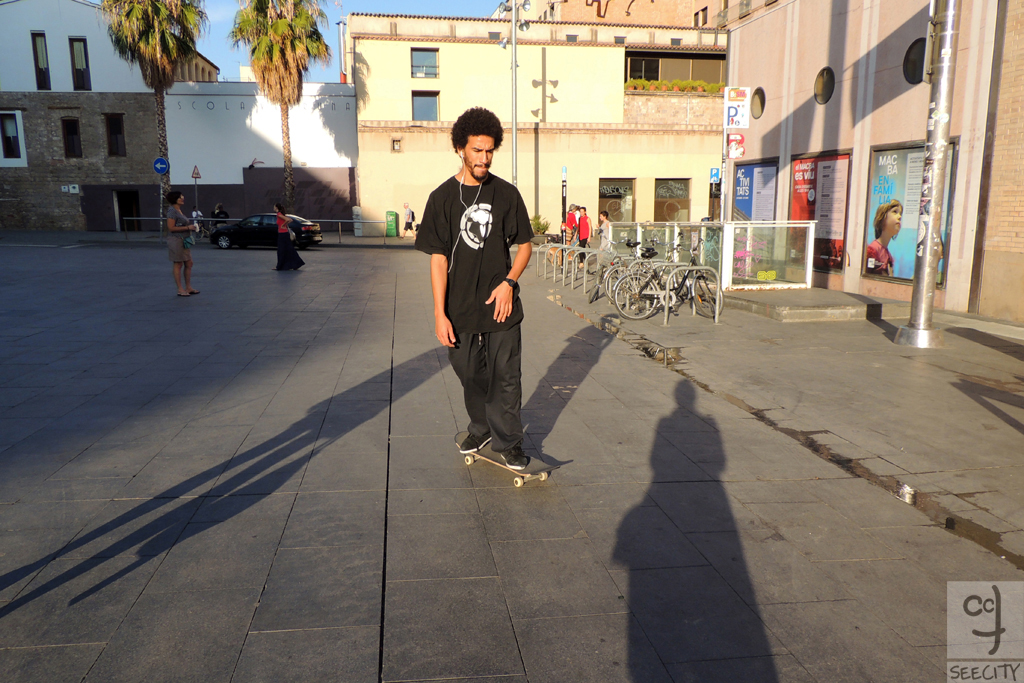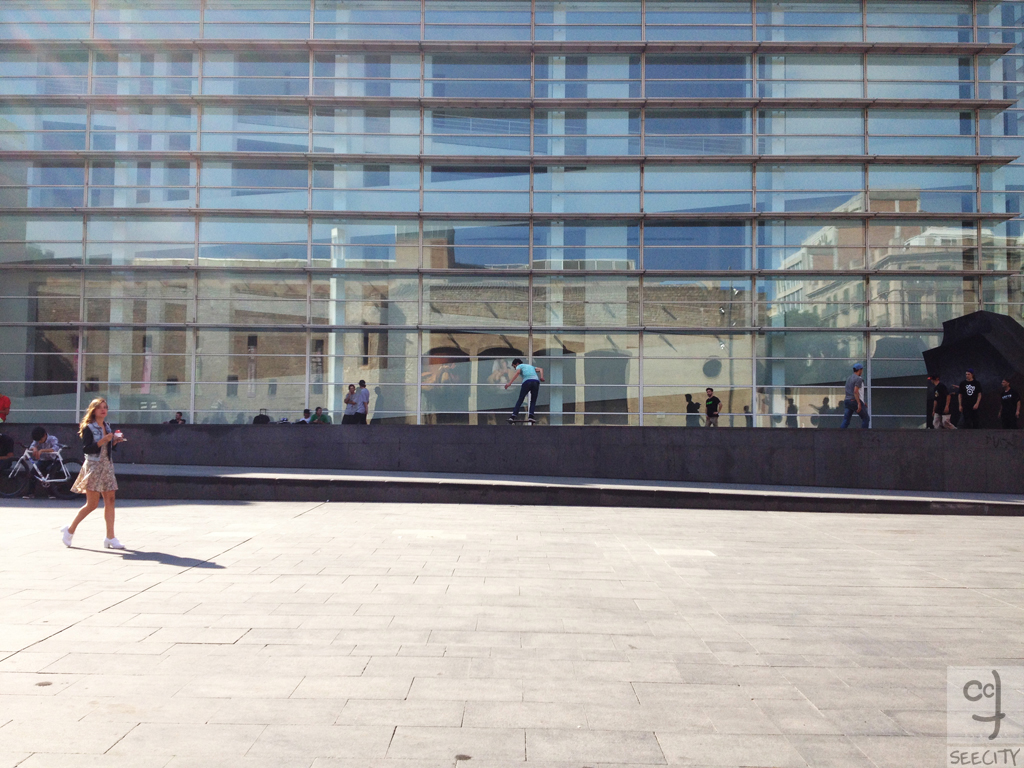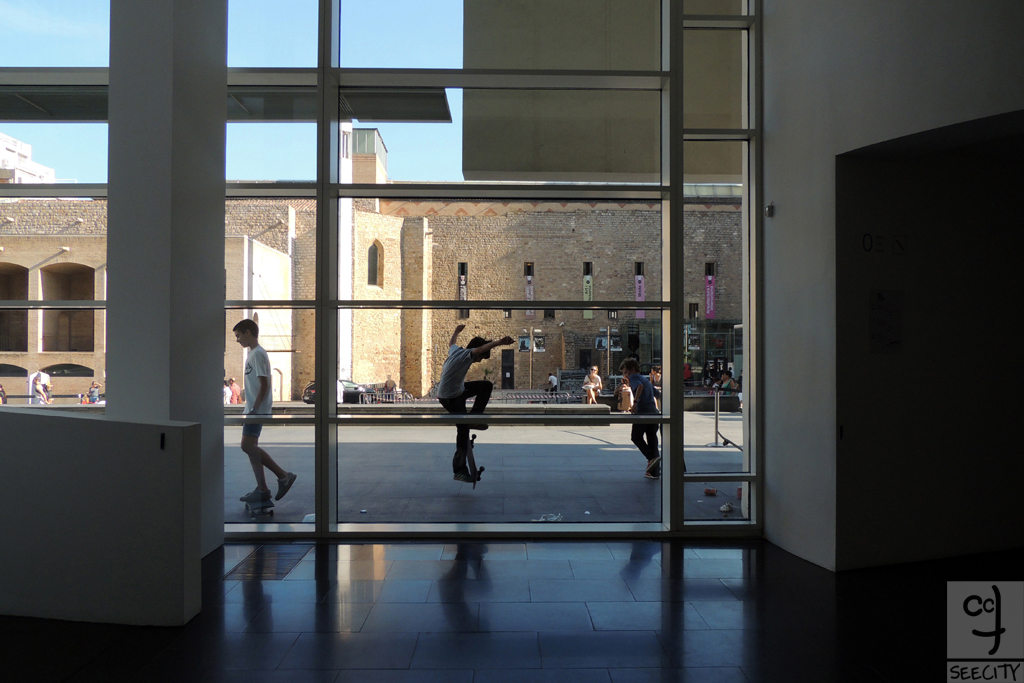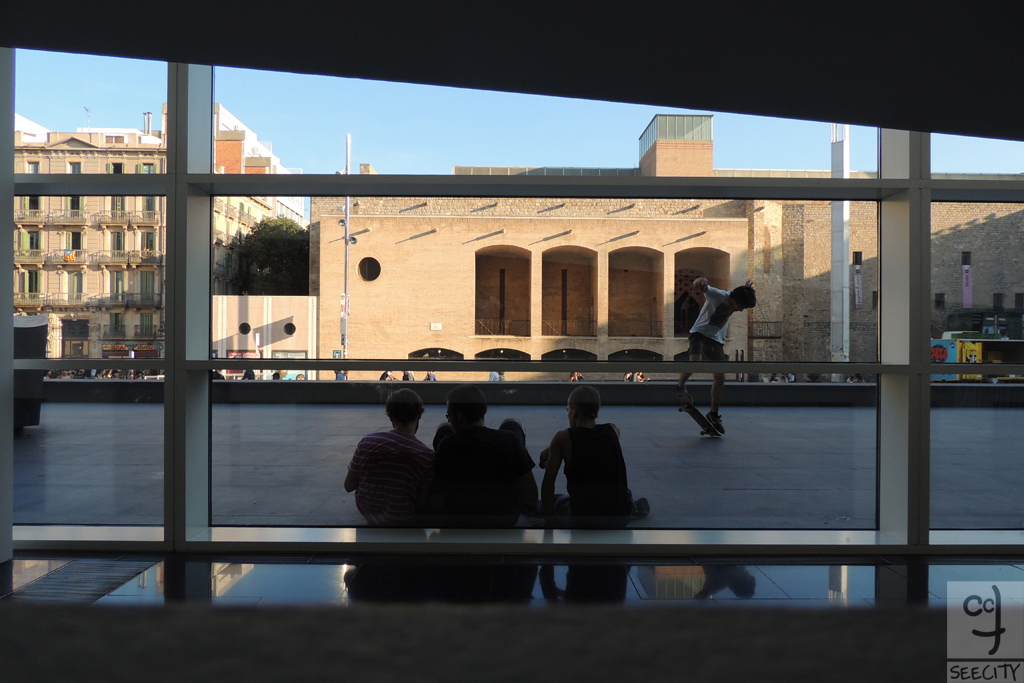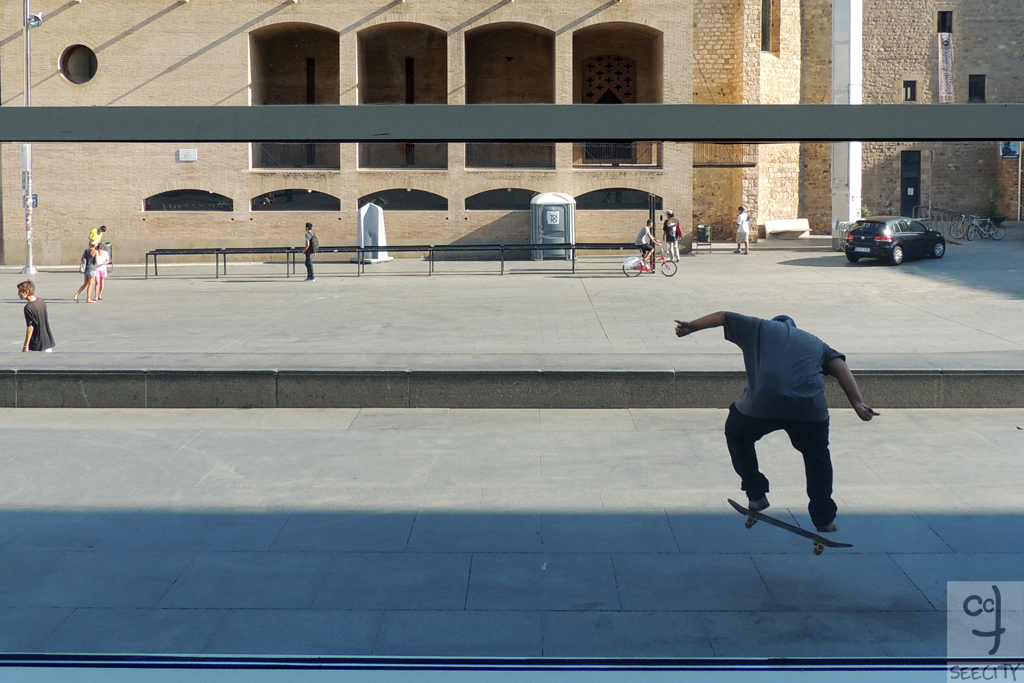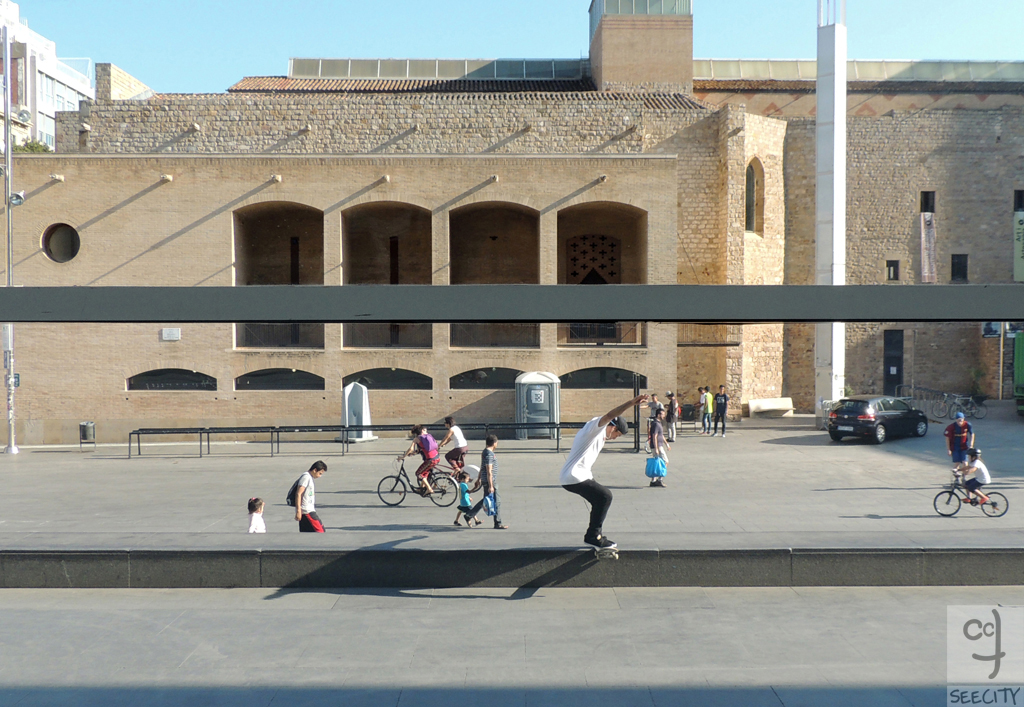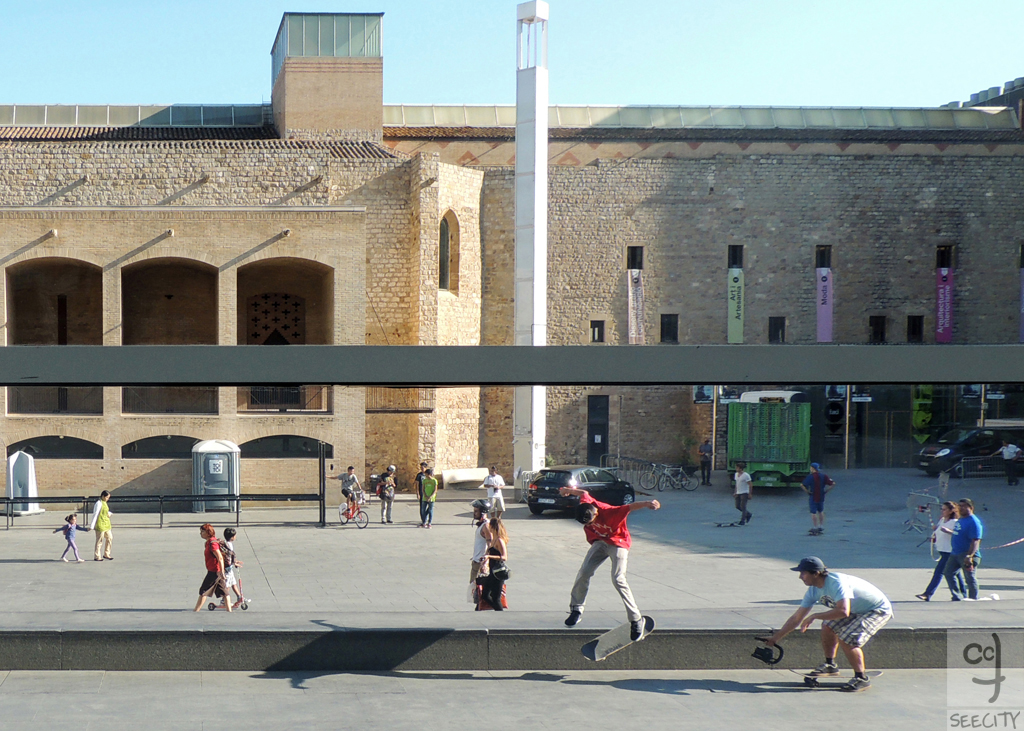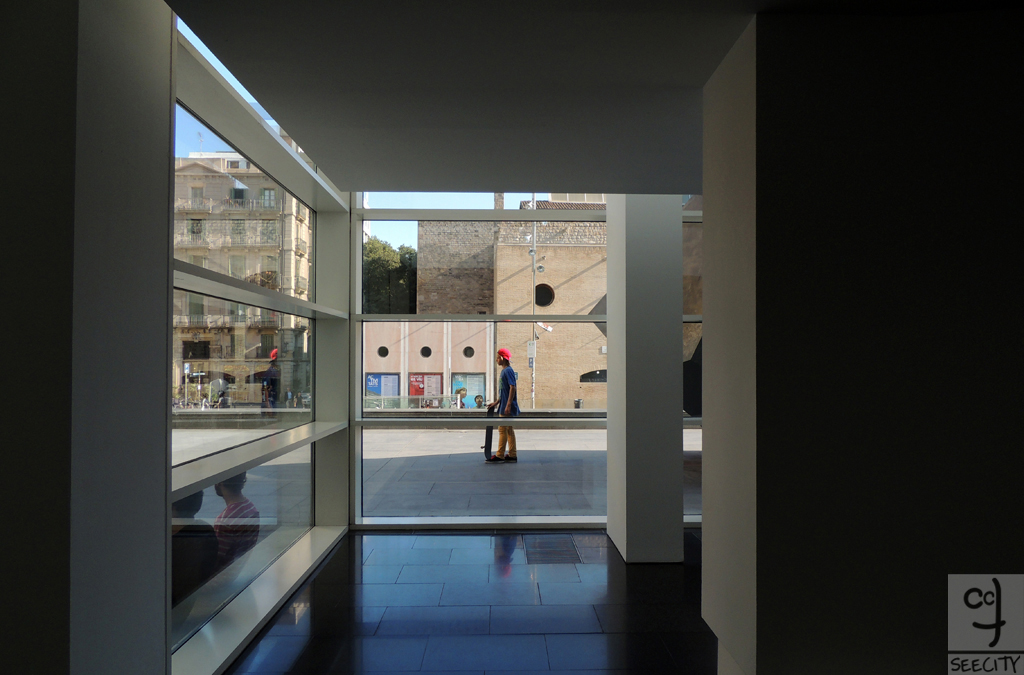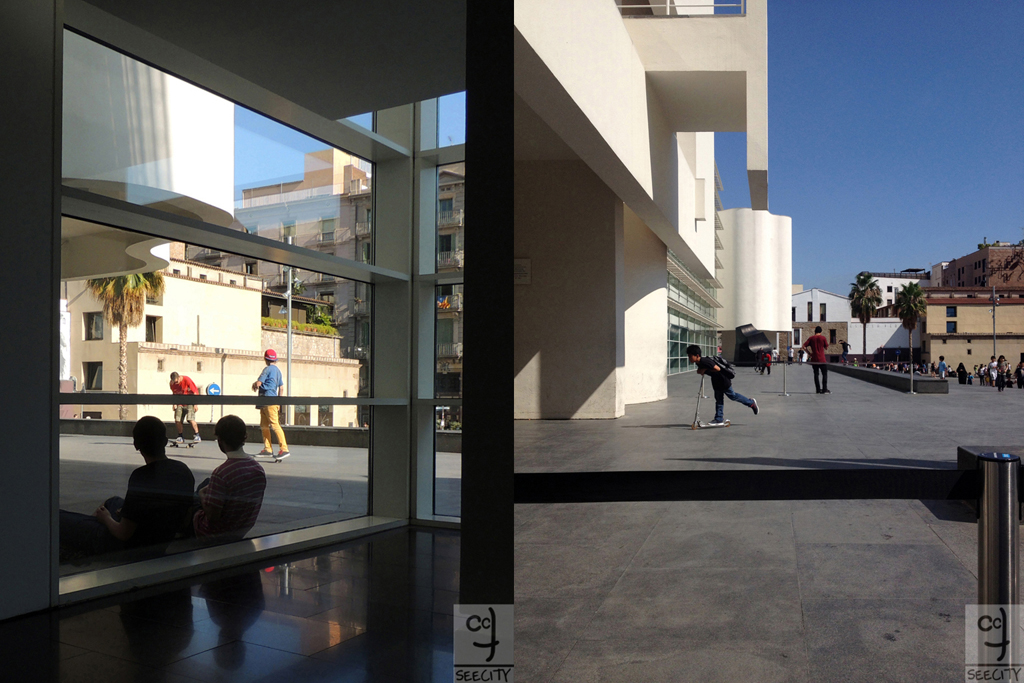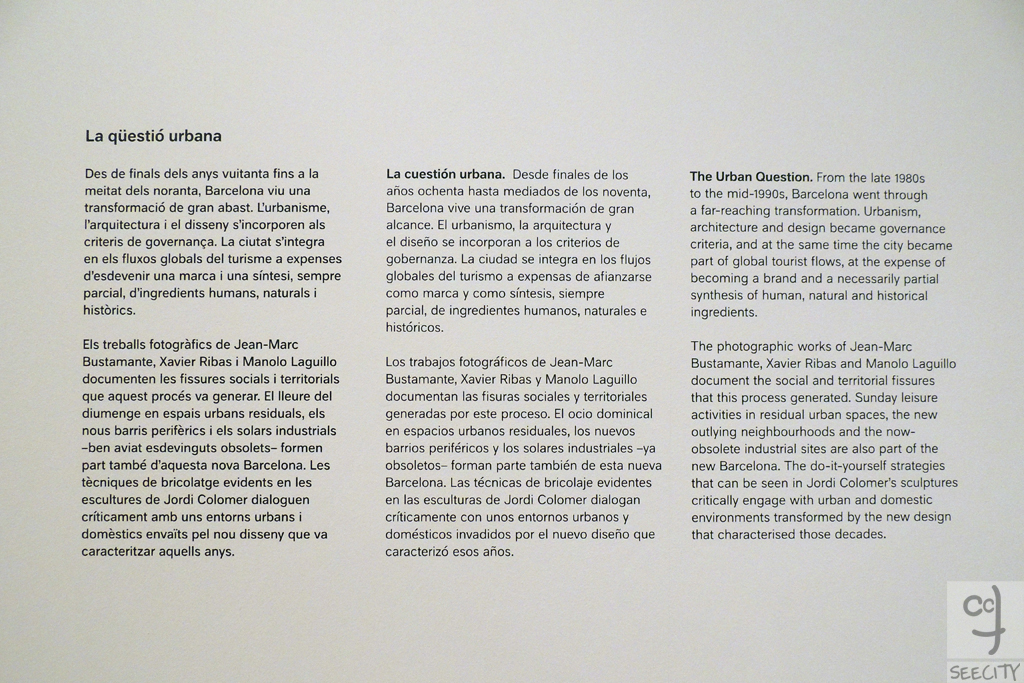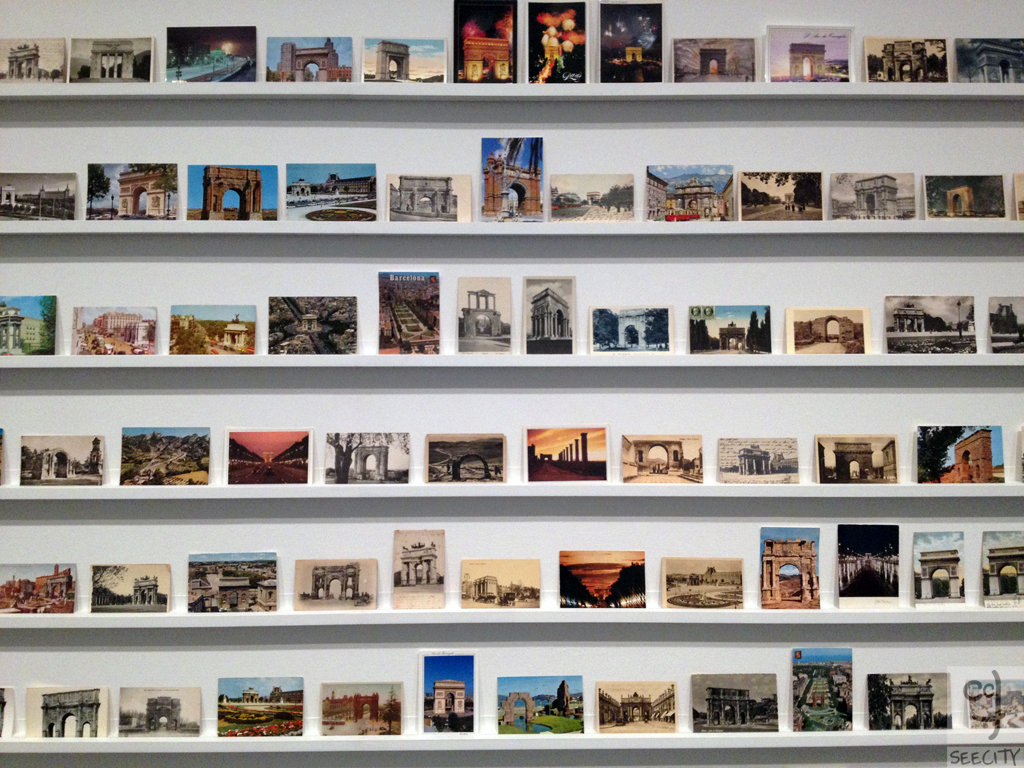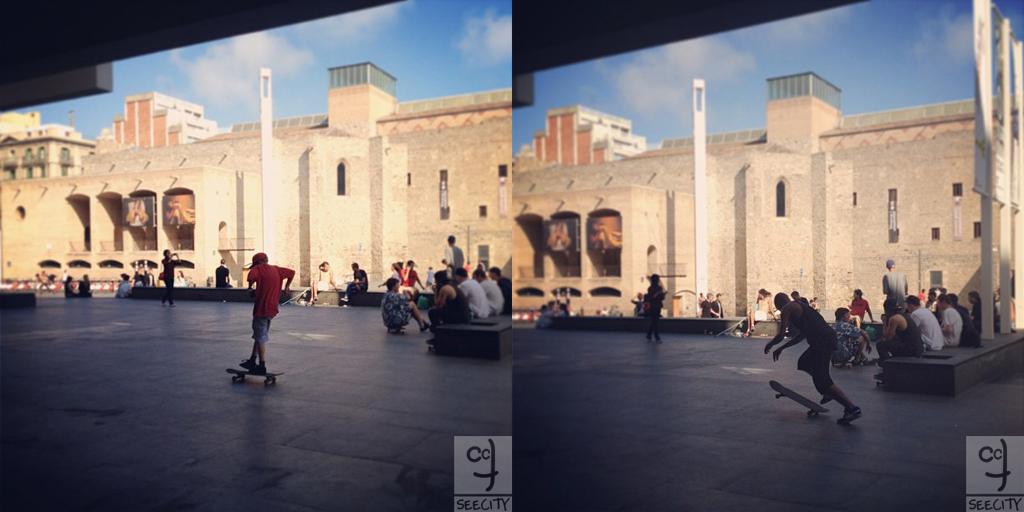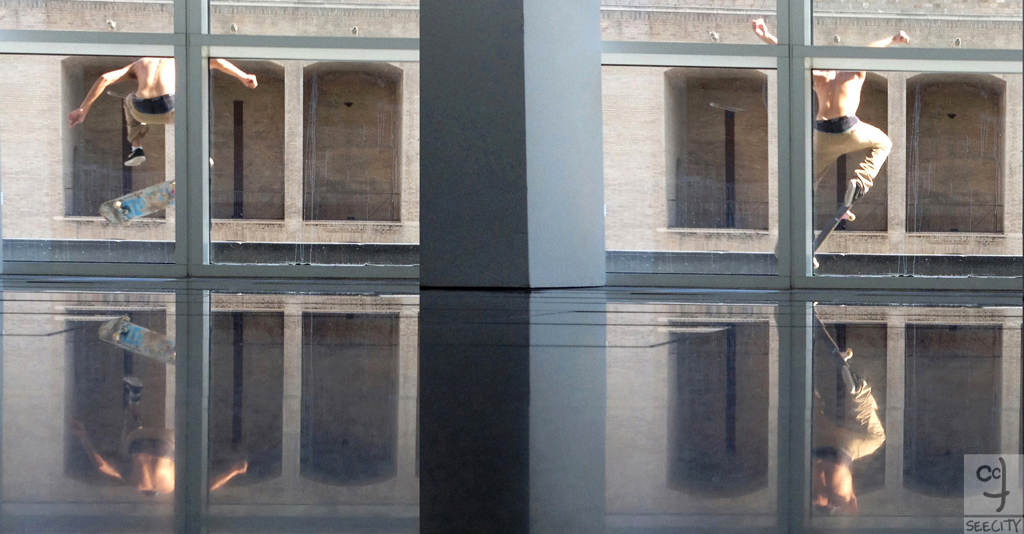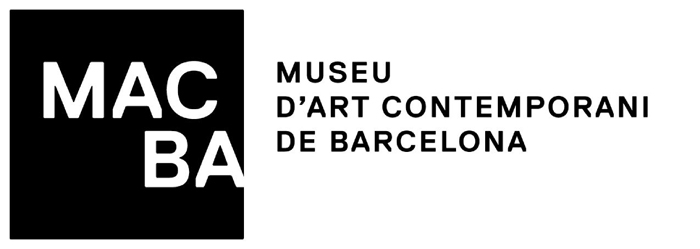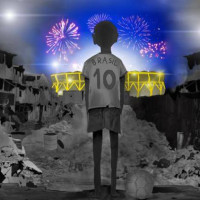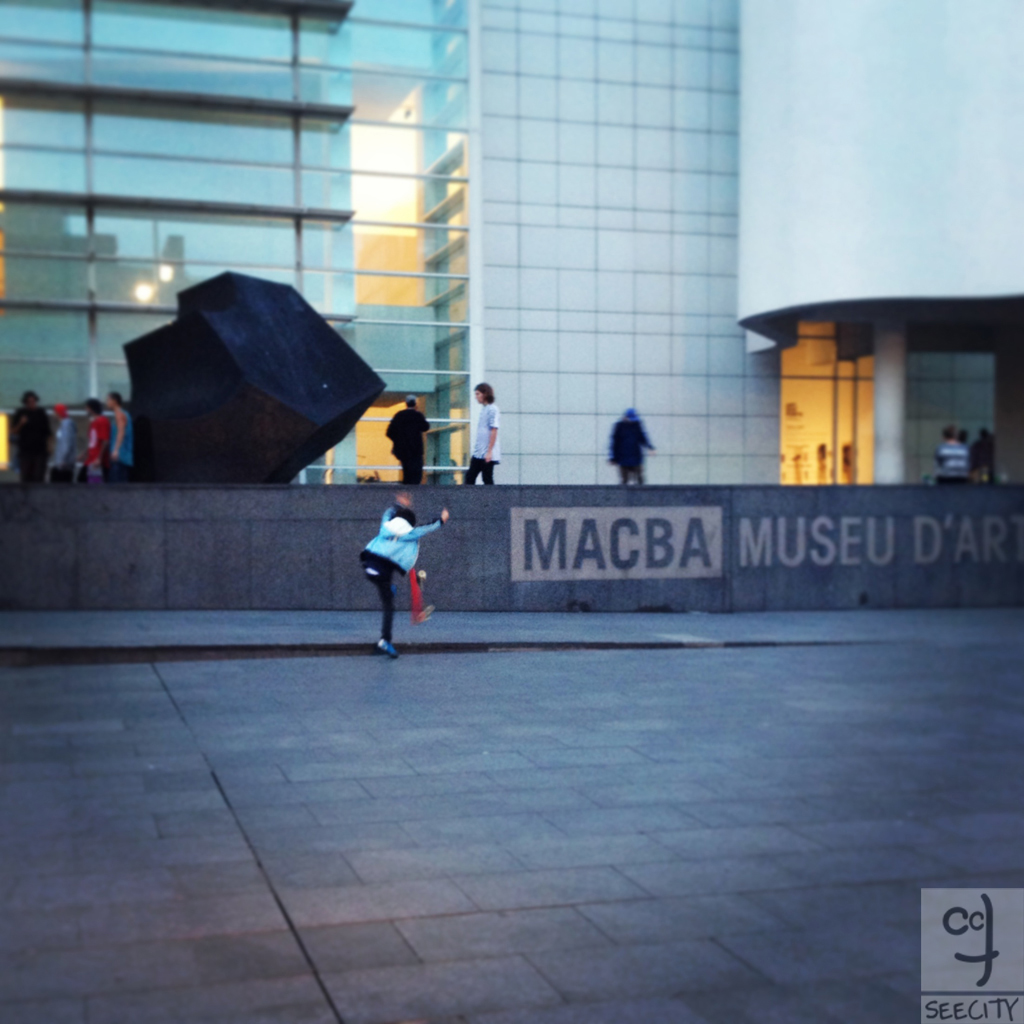
This story is sponsored by:
–
–
–
 BARCELONA At number 1 of Plaça dels Àngels, in El Raval district, the MACBA – Museu d’Art Contemporani de Barcelona is the best theatre to watch the spectacle of the skaters: young people of all ages (including children) that, at every “flight” or jump or trick in the air, inevitably throw their own board on the asphalt. “Tr-tr-tr-tr-tr-tr…” (or a similar sound) is made by the four wheels and then “T-TT-TTR!” when the skateboard falls.
BARCELONA At number 1 of Plaça dels Àngels, in El Raval district, the MACBA – Museu d’Art Contemporani de Barcelona is the best theatre to watch the spectacle of the skaters: young people of all ages (including children) that, at every “flight” or jump or trick in the air, inevitably throw their own board on the asphalt. “Tr-tr-tr-tr-tr-tr…” (or a similar sound) is made by the four wheels and then “T-TT-TTR!” when the skateboard falls.
Here “los musicos callejeros” (street musicians) not even pass. This square has already its own soundtrack. Every day, all day. How much it’s unpleasant to the hearing is a superfluous matter, considering the view: the best athletes enchant the spectator (as well as the most beautiful ones, in stylish version – a little street a little hipster – or in macho version – those that, on the hottest days, take off the t-shirt). The majority of skaters is male (even if it’s not rare to see in the city female skaters) and while they move up and down in the square (tr-tr-tr…), groups of girls intent on chatting (blah-blah-blah…) sit on the lower wall: a bit distracted but faithful audience.
In the “Square of Angels”, many young people meet up every day (from morning to evening, with an evident peak in the afternoon) to train, perform and sometimes film themselves. Habitué passers-by ignore them, the others (like me) stop always a while to observe their “flights”. And when they raise their arms to the sky, to jump higher, they seem to have wings.
On MACBA’s window-facade, the symbol of the exhibition “Art, dos punts / Arte, dos puntos / Art, two points” (18 July 2013 – 6 January 2014)
If skateboard is your favourite means of transport, the Catalan capital is Paradise. You can practice skateboarding – sport born in California in the 70s – in several places in the city and also passing through the centre on the four wheels of your table will be easy. Passionate people can find useful this website: “barcelonaskatespots.wordpress.com“. Among the “Skate Spots” marked, first of all, the MACBA (indeed!). Here, in addition to the mapping of all urban hangout places, you also find technical advices like this one: “MACBA and Universitat are great for grinding, Forum for skating around and exploring, Paralel for manual pads and Fondo for hips and banks (Beer Banks is good for that, too). There are so many spots… Barcelona is like heaven for skaters!”.
MACBA – Museu d’Art Contemporani de Barcelona
Architecture: “White is the most wonderful color because within it you can see all the colors of the rainbow. The whiteness of white is never just white; it is almost always transformed by light and that which is changing; the sky, the clouds, the sun and the moon.” – Richard Meier says and MACBA, indeed, is signed by him.
The work is built in a complex historical texture, in the area of an ex convent: la Casa de la Caritad. When the North American architect finished the MACBA (1990-1995), the citizens and especially the inhabitants of El Raval were not so enthusiastic. In addition to doubt on the building, too modern for a so old neighborhood, they didn’t understand the usefulness of a square so empty and gray. In short, they didn’t like that large table of asphalt in front of the Museum. But then, as we have seen, the skaters have made sense of it. Example of how public architecture assumes its real meaning only when it’s lived by its inhabitants. Of course, Meier didn’t design this space with the intention of making El Raval’s skaters happy.
The MACBA is white in- and outside. The main entrance is located in the passage that connects Plaça dels Àngels to the garden behind the building (that is Plaça de Joan Coromines – where you find the C3Bar of CCCB) and that divides the ground floor into two parts: on the one hand, the private areas, the library and the museum store; on the other, the cylindrical volume of the reception and so the exhibition areas.
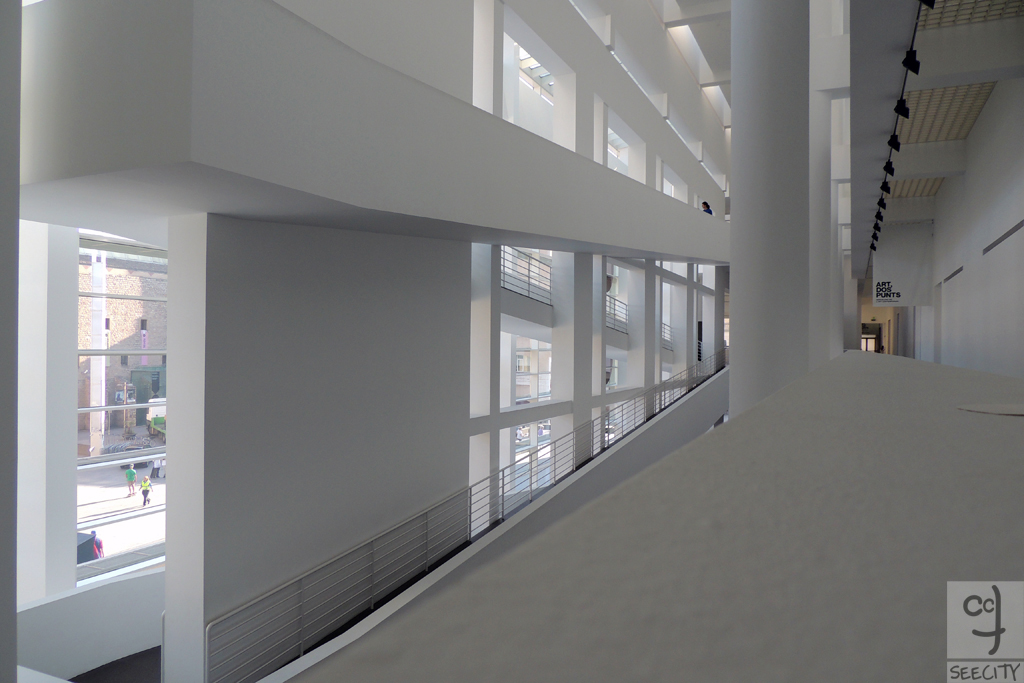
–
These are introduced by a long room with a lot of round and square, white or black puffs where comfortably to lie down, to browse the brochure about the exhibition, to observe the highest wall thinking about its enigmatic calculation (Some Objects Of Desire + Some Objects of Necessity + Some Objects of No Concern – Those Things that Escape Notice : A Force Majeure = Some Things) and in the end, to peek at the skaters through the giant window that overlooks the square and fills most of the building with natural light. Sideways, a ramp leads us to the upper exhibition spaces, organized along a longitudinal axis on three levels starting from the ground floor; the big spaces, divided by white walls, highlight the artworks around the visitor.
Museum: since 28th November 1995, MACBA shows in temporary exhibitions Catalan, Spanish and international artists. Among the most celebrated names: Alexander Calder, Antoni Tàpies and Antonio Saura (the last two, members of the “Dau al Set” (the seven-spotted dice) – group of intellectuals, writers like the poet Joan Brossa and painters inspired by Joan Miró, born in 1948). The Collection starts with the materic abstraction of the 50s and follows the evolution of European pop, the avant-gardes of the 60s and 70s, the centrality of the word and poetic experience and the return of photographic figurative representation, and anti-minimalist sculpture in the 80s, before reaching today’s younger artists.
Còpies (2000, work in progress) by Oriol Vilanova. MACBA Collection.
MACBA Chapel: in September 2006, the Museum has extended up to the other side of the square, in the Convent del Àngels (in Carrer dels Àngeles, 7). This place, part of the architectural-historical-artistic heritage of the city, is composed of: the Gothic Church (built in the late 1400s); the Peu de la Creu Chapel (1568-1569, the only Renaissance Chapel preserved in Barcelona); and the building leaning against the Chapel in the 80s, designed by architects Lluís Clotet and Ignacio Paricio. With the restoration, the Convent has been converted into exhibition space and theatre to host various cultural events.
Archive and Library at the MACBA Study Centre: in December 2007, MACBA began conserving many documents – papers, books, magazines, photographs, videos, posters, etc. – extending this way its role in research, debate and diffusion of contemporary thought. The library and reading room (in Plaça dels Àngels, 8) are free open to the public from Monday to Thursday, from 10am to 7pm (and closed on holidays).
Sónar: International Festival of Advanced Music and New Media Art
The MACBA e the near CCCB (Centre de Cultura Contemporània de Barcelona) – or rather, Plaça dels Àngels and the beautiful CCCB’s courtyard – are among the main locations of the famous Sónar, Festival of Advanced Music and New Media Art that since 1994 takes place in Barcelona every year in the month of June, for three days.
Address: Plaça dels Àngels, 1 – Barcelona
macba.cat | Facebook | Twitter


